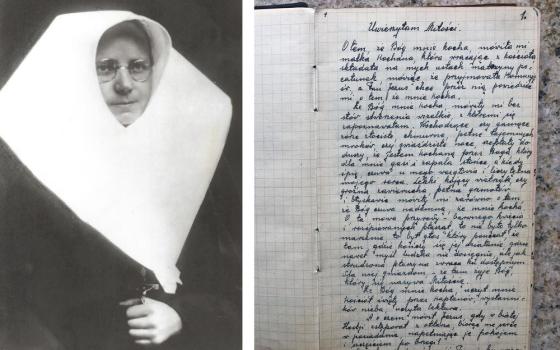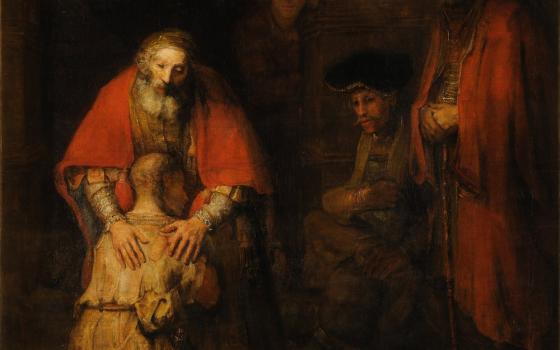 A recent Vatican move barring American Jesuit theologian Fr. Roger Haight from teaching and publishing while he works with the order’s leadership to clarify his views could, at least theoretically, be analyzed in a variety of ways:
A recent Vatican move barring American Jesuit theologian Fr. Roger Haight from teaching and publishing while he works with the order’s leadership to clarify his views could, at least theoretically, be analyzed in a variety of ways:
- At the level of church politics, it could be seen in terms of long-simmering tensions between Rome and the Jesuits, or as the predictable tendency of a first-time American prefect in the Vatican’s doctrinal office, Cardinal William Levada, to take a special interest in his own backyard.
- It could also be fed through the grinder of clashing interpretations of Pope Benedict XVI, since the Vatican’s interest in Haight dates from the period when the pope was still running the Congregation for the Doctrine of the Faith. (As one Jesuit wag put it, the recent moves show that “Ratzinger is still alive and well inside Benedict.”)
- Yet another approach would be in terms of administrative judgment: Granted that the Vatican has a right to police Catholic teaching, is preventing a past president of the Catholic Theological Society of America, not to mention a septuagenarian academic, from teaching in a non-Catholic setting going too far? (As a consequence of the restrictions, Haight will no longer teach at Union Theological Seminary in New York.)
Earlier story: Rome orders theologian Roger Haight to stop teaching, publishing
As worthy of discussion as all that may be, however, it’s no more than a sideshow to the main event. That’s because at the level of substance, the Haight case pivots on the most explosive question in Catholic thought today: What theological sense should Christianity make of non-Christian religions?
In a post-9/11 world, in which inter-faith relations are, for good or ill, a central driver of history, how Catholicism answers that question has potentially mammoth consequences.
To be clear, what’s at issue is not whether non-Christians can be saved, or whether there are “elements of truth and grace” in non-Christian faiths. Both are settled points of church teaching. Instead, debate turns on the theological basis for these attitudes. In varying ways, theologians such as Haight have argued that religious pluralism exists not only de facto, as a consequence of sin and the fractured unity of the human family, but also de jure, as a positive feature of God’s plan for salvation.
Put in an admittedly over-simplified form, the idea is that Christ is bigger than Christianity, and that at least in this order of history, God may well be content for some portion of humanity to approach him through non-Christian paths.
By all accounts, Haight’s 1999 book Jesus: Symbol of God is among the most daring versions of this “pluralist” point of view. His stated aim was to express the church’s teaching in language accessible to a postmodern readership – an audience, Haight says, that has trouble with exclusive claims for any one religion. Jesus, according to Haight, should thus be understood as the “central symbol” of God for Christians, but only “one of many symbolic actualizations of God’s loving presence to humankind.” In other words, Buddha, Krishna and Muhammad may be valid “symbols” of God, too.
In that light, Haight is tentative (some would say deliberately ambiguous) about whether Christ as God’s Eternal Word, or the Holy Spirit, are real “persons” of the Trinity, or simply “symbolic” means of talking about God’s activity.
Such formulae obviously push the envelope of traditional Christian teaching, and it surprised virtually no one that Jesus: Symbol of God attracted attention in Rome. A 2005 Vatican “notification” faulted the book on a variety of grounds:
- It undercuts the doctrine that Christ existed as the divine Word of God prior to his incarnation as Jesus of Nazareth.
- The book presents Jesus as a human being who “symbolized” or “mediated” the saving presence of God, as opposed to being truly divine and truly human.
- Haight suggests that “to affirm … that Jesus accepted to suffer punishment for our sins, or to die to satisfy the justice of God, does not make sense in the world of today.” That position, the congregation held, is unacceptable.
- Haight holds that Jesus is “normative” for Christians but not “constitutive” for followers of other religions, and that it is not necessary to believe that God saves only through Jesus. Such arguments, the notification asserted, contradict the church’s traditional faith in Christ as the lone and universal savior.
Notably, the Haight affair is not one of those stereotypical Catholic stories where tensions break down exclusively between Rome and the theological guild. Instead, Haight’s theories have generated animated debate within Catholic theology, and in some ways the 2005 Vatican notification did little more than echo criticisms that had already been circulating among theologians themselves.
At a 1999 discussion of Haight’s book organized by the Catholic Theological Society of America, for example, William Loewe of the Catholic University of America suggested that by treating the second and third persons of the Trinity as “symbols,” Haight ends up with “a Unitarian God and a merely human Jesus.” Notre Dame theologian John Cavadini, a consulter to the U.S. bishops’ Committee on Doctrine, wrote in Commonweal in the same year that “there is a difference between rendering Christian faith intelligible to a culture, and reducing its central theological claim to a statement that even an atheist can affirm.” Haight’s fellow Jesuit Fr. Gerald O’Collins, widely considered among the church’s most eminent Christologists, told NCR in 2005, “I wouldn’t give my life for Roger Haight’s Jesus. It’s a triumph of relevance over orthodoxy.”
A similarly mixed reception greeted the two works Haight has published in the meantime: a three-volume study of the church titled Christian Community in History, and The Future of Christology.
While some critics were dismissive, supporters such as Fairfield University theologian Paul Lakeland rallied to Haight’s defense. Lakeland wrote in a January 2007 essay that Haight seems right “in embracing the modern moral intuition that tells us that we are out of our depth and beyond our rights when we try to confine the Spirit to the Christian story.”
Though the fine points can seem obtuse, both sides to the debate perceive supremely practical implications.
For the Vatican, as well as a cross-section of theologians and concerned Catholics at the grassroots, pluralistic theologies such as Haight’s compromise core truths of the faith. If Christianity cannot confess Jesus as the lone savior of the world, they insist, it has lost its raison d'être. Moreover, these critics warn, theologies such as Haight’s run the risk of sapping the church’s missionary energies, and paving the way for a fatal loss of Catholic identity.
For Haight and like-minded thinkers, what’s in play is not only Christianity’s capacity to engage other religions without seeking to colonize them, but its very plausibility in a post-modern world. In that sense, Haight has sometimes insisted that he’s the one serving the church’s missionary interests, especially in the West, where tolerance of pluralism is the price of admission to public conversation.
Given those stakes, one thing seems clear: The Vatican’s move to ask Haight to stop teaching and publishing, and his decision “to comply fully,” may temporarily put him on the sidelines, but the game itself is far from over.



